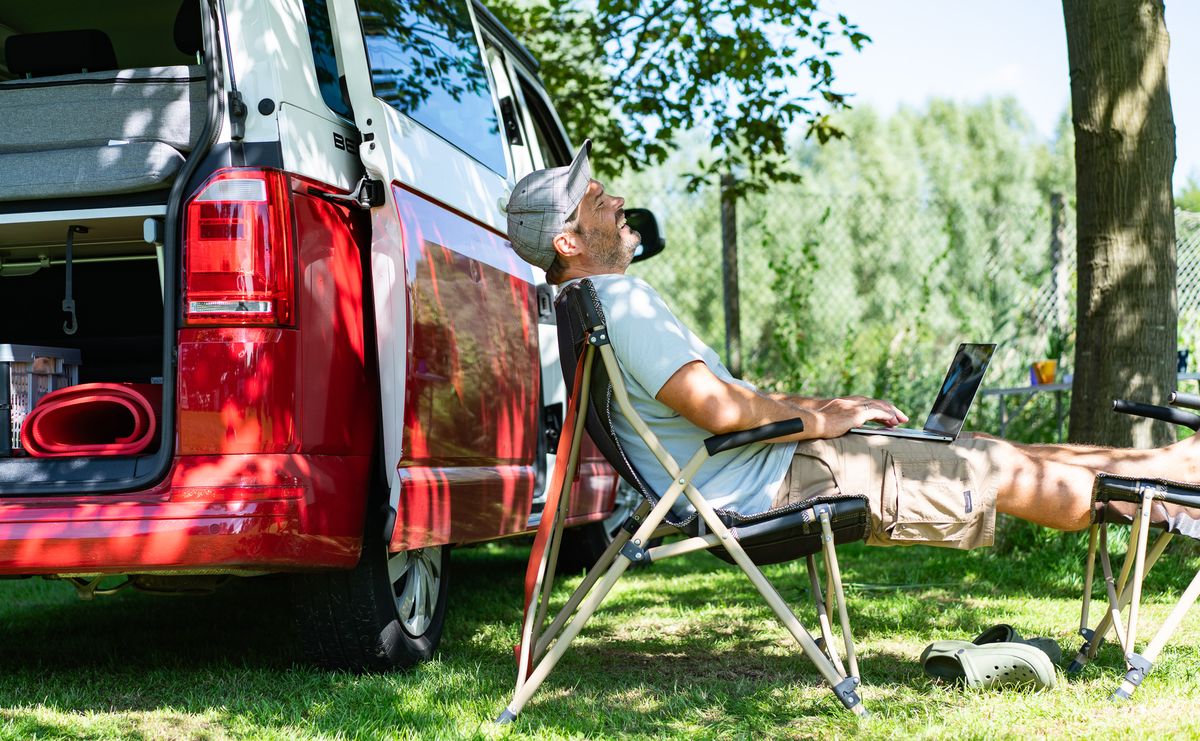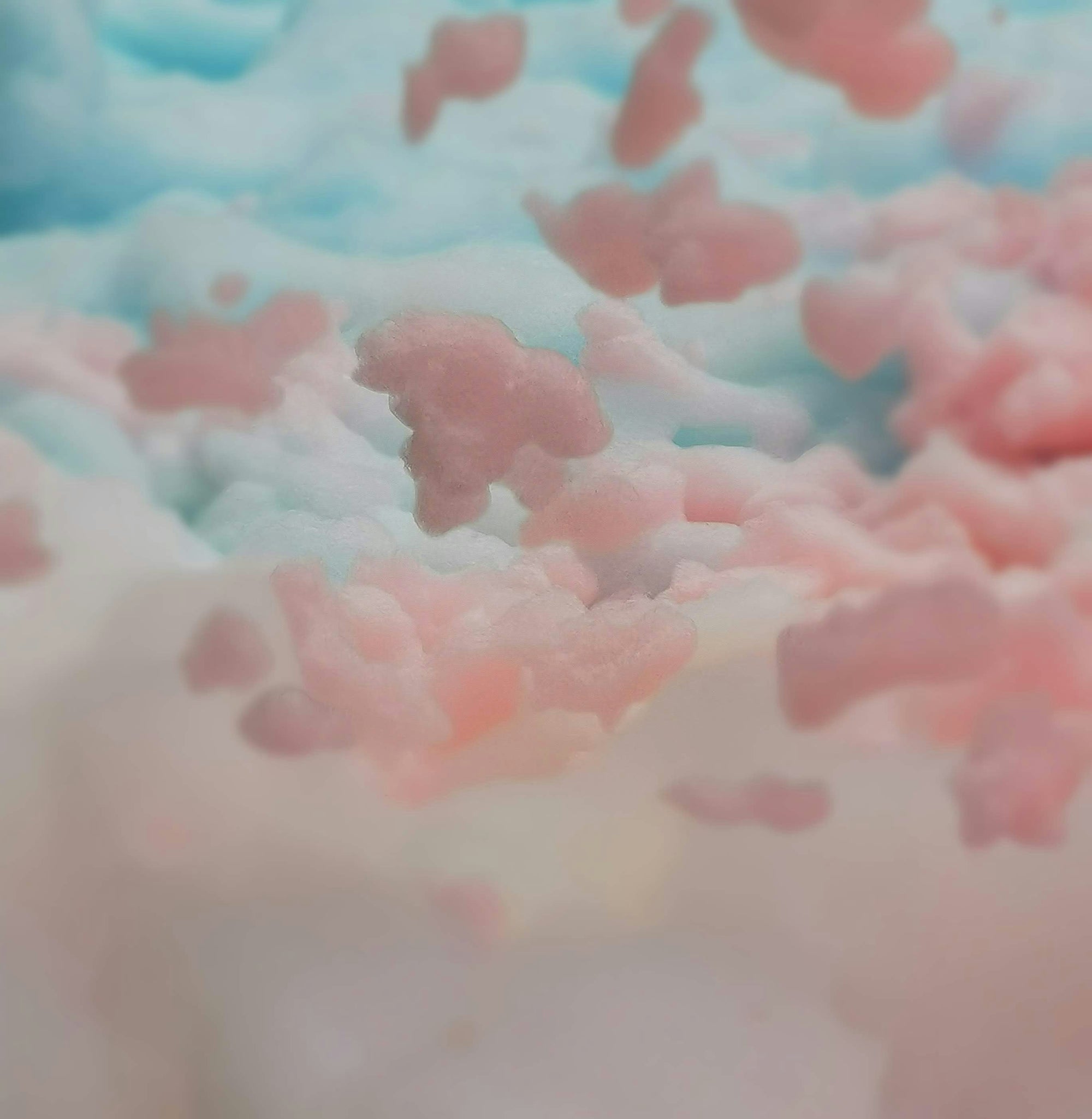Wood on wood with silver-grey handles and white plastic tubs in the camper bathroom. If the same wood veneer covers the walls, the shelves, the doors and the floor, then we are talking 99% about the interior look of German mobile homes or caravans.
It quickly became clear to us that a lot of visual changes needed to be made to our motorhome. A camper is already very limited in terms of living space and all the wood makes the room look even smaller. First we covered our wall cupboards with foil and quickly reached our limits with the project. Large, square surfaces are easy to cover with foil, but unfortunately there are an incredible number of small corners, curves and recesses in a caravan or motorhome. Painting definitely paid off here, as you can get into every corner cleanly with the right brush.
It was not easy for us to find the right color, after all, several factors were very important to us and had to be taken into account:
- Best not to sand
- It has to be robust and shockproof, after all, you're constantly bumping into something in a small space. Especially with a small child on board
- Preferably sustainable paint

After an Instagram survey, we became aware of MissPompadour ’s sustainable, plant-based dye and decided to use it.
Our camper package:
Clean, clean, clean
Even if you can skip the sanding step (spoiler alert!), you should not skip the cleaning step. There is hardly anything more annoying than finding small bumps on your first coat of paint that you have to laboriously remove. In addition, the cleaner from MissPompadour not only removes stubborn dirt but also grease films on surfaces.
No sanding required

The thought of having fine dust all over the camper was driving me crazy. One of my most important requirements was to find a primer that didn't require sanding. As mentioned earlier, with the MissPompadour series we can fortunately skip this step completely. First things first: primer! MissPompadour Stainblock is basically used to create a barrier between the surface and the paint. The primer is already a little white, but not completely opaque. But this definitely helps to create a smooth and spotless surface for later painting.
The painting

For the wall paint in our camper van, we chose the "White with white - soft & matt varnish" from MissPompadour . The big advantage here is that the color is perfect for open and varnished wood. The stability of the color is also crucial for the right color in the camper. After all, the space in which we move and the probability of constantly bumping into something is very high. So make sure to choose the varnish version that gives the surfaces in the camper stable usability.
We needed three coats of paint to get full coverage on the wood veneer in the camper. The white matches the white sky and makes the room appear much larger and calmer. It immediately looks much more modern and inviting.
Seal your surfaces

Have you ever caught yourself thinking about simply skipping the extra step of sealing? Because it doesn't change anything visually anyway. Only if you want to get lasting and long-lasting benefits from all your effort should you quickly grab the brush and apply the sealant. It gives it the necessary durability. It's especially important to get the maximum quality out of a painting project like this in a camper. The sealant is almost colorless and gives the surface a slight shine.
Experience report:
We drove to Florence in our camper van straight after we had finished painting. Packed full of new camping equipment and a small child who is not afraid of anything. The sealing and high quality paint paid off immediately. First there was the moment of shock when I saw a dark stripe on the painted white surface - was it already damaged? In fact it was a stripe of dirt, which was easy to remove with a damp cloth thanks to the sealing. If I had used a different color, the paint would probably have flaked off.
What exactly should you paint with?
We used the 75mm painting brush from MissPompadour and what else can I say - I love it! If you've been following my stories on Instagram and Facebook, you'll remember how I raved about this brush. I actually used a standard brush for the primer. Then I painted with the brush from MissPompadour and then primed another area (long story as to why I didn't prime everything straight away). It only took me one small area before I put the standard brush aside and went to the hardware store to get a brush similar to the one from MissPompadour. Lesson number 1: There isn't one. Lesson number 2: Don't skimp on materials or your painting utensils!
The angled shape of the brush means you can reach every corner of the camper perfectly. And there are quite a few of them in the camper. With the extremely fine bristles you can apply an incredible amount of paint at once and the difference to a "normal" brush is like night and day.
Definitely invest in good equipment here. It will be visible.
Worried about resale?
Painting is something permanent and initially puts some people off from picking up a paintbrush. But we are firmly convinced that if the work is done cleanly, the paint is of good quality and there are no crazy colors (and even those can be painted over), a camper can be resold just as easily. After all, the camping market is booming and the demand for a personal touch in a camper is increasing rapidly. Social media such as Pinterest, Instagram and Co. invite you to the great van life dream, where every corner has been designed and built by yourself.
The camping market is just being discovered by the younger generation, but so far it has been visually geared towards the older generation. And unfortunately, the camping industry has missed the boat here. So it means getting creative yourself. And that's where the market advantage comes in. If a camper has been designed in neutral and modern colors on the inside and has been implemented to a high quality, wouldn't you prefer that to a camper clad in gray wood veneer?
Wrap or paint?

We actually wrapped some wall cupboards in our camper van. But wrapping is not suitable for all surfaces and materials. At MissPompadour, hardly any material is left out, so there is a suitable color for every surface. When painting, you can really get into the smallest corners with the brushes, and there are quite a few of them in the camper. That would be impossible when wrapping, because you can't work very cleanly with the curves, recesses and corners. You have to make good cuts and fold them over skillfully, and even then the seam of the foil will always be visible.
Our conclusion: We went hybrid and are very happy with the result. You can paint everything, but not cover everything with foil . We covered large and simple surfaces, such as a wall cupboard door, with foil. But we even painted the body of the wall cupboard again, as most of them have curves.
Learn from our mistakes:
- The painting project with the paint from MissPompadour was actually not our first painting project in the motorhome. I was overcome by the urge to do something too quickly and I immediately went and grabbed the nearest white paint bucket from the hardware store. Practical, because the paint was 3 in 1, i.e. primer, paint and sealant in one. Unfortunately, the result was not very attractive and I left it at small areas for now. The paint also smelled strong and the thought of sleeping in it was unbearable. Only then did I start doing intensive research.
- Bad masking tape: Cheap masking tape usually doesn't stick 100% tightly to the surface. So if you press a little harder with the brush, paint can run under the tape. The effort afterwards is far too great to spend a few more euros. It's worth it.
- Bad brush: The standard brush with its thick bristles brushes much more roughly and the bristles usually do not line up in a straight line. With a good brush you can work much more cleanly and save yourself a lot of correction work. Especially since you can avoid streaks much more easily.





